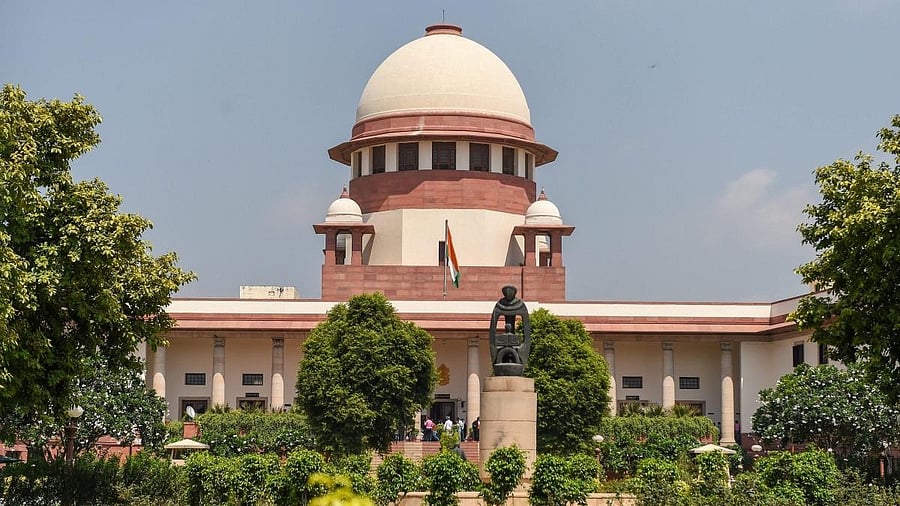
The Supreme Court of India
Credit: DH File Photo
New Delhi: Mere presence at the scene does not render a person a member of an unlawful assembly unless it is established that he also shared its common object, the Supreme Court said on Tuesday as it laid down parameters for courts to safeguard innocent spectators or onlookers from being convicted merely on account of their presence.
A bench of Justices J B Pardiwala and R Mahadevan made the remarks while acquitting 12 convicts serving a life term for committing the offences of murder and unlawful assembly in a Bihar village in 1988.
The bench said where allegations are levelled against a large number of people, courts must carefully scrutinise the evidence, more so if the evidence on record is hazy.
Analysing section 149 of the Indian Penal Code (IPC), which says every member of an unlawful assembly is guilty of an offence committed in prosecution of a common object, the bench said the provision stipulates that if an offence is committed by any member of an unlawful assembly (of five or more persons) in prosecution of the common object of that assembly, or if the members of the assembly know that the said offence was likely to be committed in prosecution of the common object, every person who, at the time of committing that offence, was a member of that assembly, will be guilty of that offence.
"Mere presence at the scene does not ipso facto render a person a member of the unlawful assembly, unless it is established that such an accused also shared its common object. A mere bystander, to whom no specific role is attributed, would not fall within the ambit of section 149 of the IPC," the bench said.
It said the prosecution has to establish, through reasonably direct or indirect circumstances, that the accused persons shared a common object of the unlawful assembly.
"The test to determine whether a person is a passive onlooker or an innocent bystander is the same as that applied to ascertain the existence of a common object," it said.
The top court said the existence of a common object is to be inferred from the circumstances of each case, such as the time and place at which the assembly was formed, the conduct and behaviour of its members at or near the scene of the offence, the collective conduct of the assembly as distinct from that of individual members, the motive underlying the crime, the manner in which the occurrence unfolded, the nature of the weapons carried and used and the nature of injuries inflicted.
Justice Pardiwala, who penned the verdict on behalf of the bench said the court, as a matter of caution, has enunciated parameters to safeguard innocent spectators or passive onlookers from being convicted merely on account of their presence.
"This cautionary rule, however, does not dilute the doctrine of constructive liability, under which proof of an overt act by each individual is not indispensable. Where the presence of a large number of persons is established and many are implicated, prudence mandates strict adherence to this rule of caution," the verdict said.
The top court said the law on the point can be summarised to the effect that where there are general allegations against a large number of people, the court must be very careful before convicting all of them on vague or general evidence.
"Therefore, the courts ought to look for some cogent and credible material that lends assurance. It is safe to convict only those whose presence is not only consistently established from the stage of FIR, but also to whom overt acts are attributed which are in furtherance of the common object of the unlawful assembly," it said.
The court said the expression "in prosecution of the common object" in section 149 of the IPC means that the offence committed must be directly connected with the common object of the assembly, or that the act, upon appraisal of the evidence, must appear to have been done with a view to accomplish that common object.
The bench said it is of utmost importance to consider whether the assembly consisted of some people who were merely passive onlookers and had joined the assembly as a matter of idle curiosity, without the knowledge of the common object of the assembly, since such people cannot be said to be members of the unlawful assembly.
"We say so because the nucleus of section 149 is 'common object'," it said, adding that once the two broad essentials of section 149 are fulfilled -- an offence is committed by any member of an unlawful assembly in prosecution of the common object, or if the members of the assembly knew that the said offence was likely to be committed in prosecution of the said common object -- every person who at the time of the commission of the offence was a member of the assembly is to be held guilty of that offence.